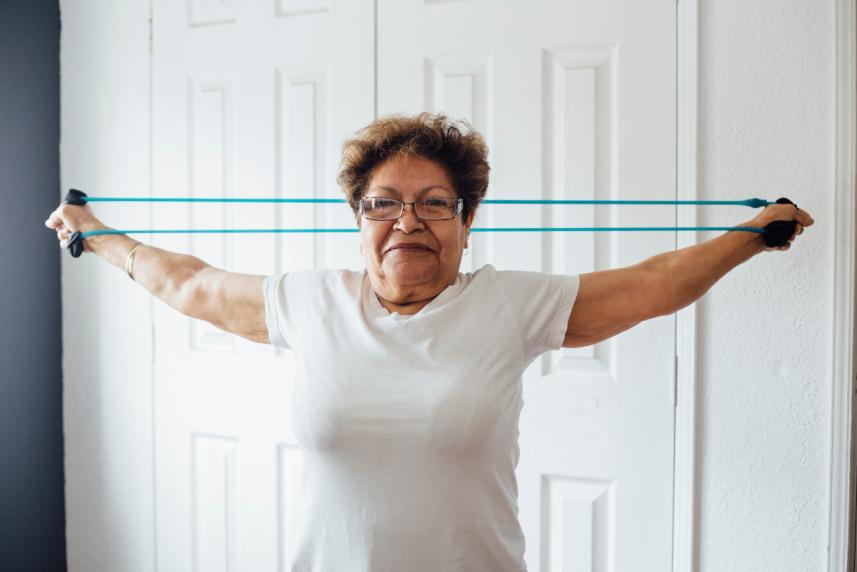Five easy ways to correct your posture
Standing tall isn't just about your spine. Your chest plays a role, too.

We're all guilty of spending too much time on our personal gadgets and computers, but did you know it could be causing you chest pain? From setting off an episode that feels like loss of breath to igniting sharp pains, a tight chest can cause extremely uncomfortable musculoskeletal problems. But it can be an easy thing to fix.
In contemporary society, "we spend so much of our time hunched over at our computers, iPads, and phones," says Elise Joan, a yoga teacher and creator of Burn Bliss at Equinox Fitness Clubs. Whether you're sitting at your desk, lying in bed and craning your neck to see a screen, or leaning over a coffee table, "all that hunching tends to put tension in the [chest and shoulder muscles]," Joan says.
To loosen up a tight chest, borrow a few tricks from yoga. "One of the things I love about yoga overall is the emotional value of it. And quite literally, if you keep yourself open mentally, the body will contribute [muscular] changes," Joan says. Yoga is built on the concept that everything is connected, from the bones to the muscles to the mind to the breath. If you open up your chest and heart, chances are you'll feel the benefits in other areas as well.
Try a few of these small stretches and daily adjustments from Joan. Plus, you don't even have to leave your chair if you don't want to!
Posture Adjustments
At Your Desk: The tendency is to keep your computer monitor at desk level, forcing you to look down and hunch to see your screen properly. Sit in your best possible posture (spine tall, head stacked over your shoulders, abs gently toned) and take note of where your head is when you are looking at the middle of the screen. Place your computer monitor at that height, propping it up on a stand or boxes.
In the Car: In the driver's seat, sit in your best possible posture. Position your mirrors from this body position—it gives you an added incentive to sit upright since you won't be able to see if you slouch and move out of the position.
Stretches
In each of these stretches, make sure your neck is tall and imagine that the crown of your head is reaching up towards the ceiling or sky. Hold each move for 30 seconds to a minute and repeat as many times during the day as you can.
Overhead Stretch 1: If your chest is extremely tight, grab a resistance band, bathroom hand towel, or large t-shirt. Hold it on front of you with arms straight and hands about three feet apart. Stand straight, with your feet hip-width distance apart. Bring arms up and behind your ears, still holding the band or cloth and hold, allowing the stretch to open your chest. If you need a deeper stretch, move your hands closer together on the towel.
Overhead Stretch 2: If you are pretty flexible and don't feel a stretch in the move above, you can ditch the stretching aid. Starting in the same standing position, clasp your hands together behind your back. Bring your arms up as high as you can while standing upright. For a deeper stretch, make sure your palms are touching.
Sitting Stretch: Sitting comfortably, interlace your fingers and invert your grip so your palms are facing out from you. Bring your arms up so that your palms face the ceiling and make sure you’re sitting up straight. Lean from side to side to stretch different parts of your chest.
Talk to your doctor before beginning a new exercise program.


